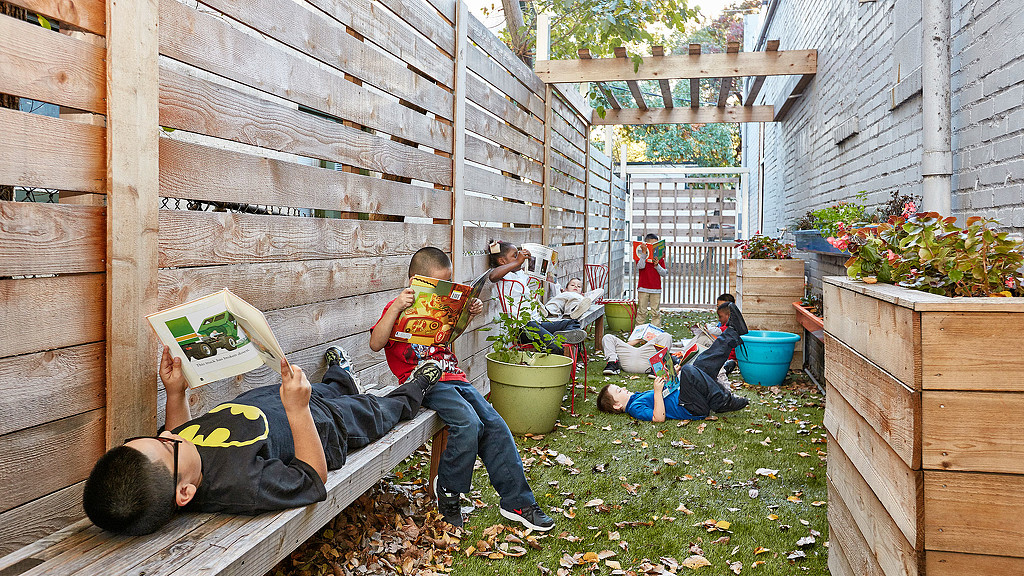Learning From Home: 3 Key Lessons for the Future of PreK-12 Learning
January 18, 2022 | By Clay Jackson, Kathryn Decker, Tommy Walborn
The past two years have been a challenge for everyone, but particularly for families with school-age children. Between balancing home life while working from home and managing the stress of living through a pandemic, many parents have experienced the added burden of picking up the slack that virtual at-home learning has left in the wake of schools closing.
Now that most schools across the U.S. are back in person, there is an opportunity to reflect upon how the experience of working, parenting, teaching, and learning from home can inform opportunities for future learning environments. The question now is, what lessons have we learned about our children’s education and the role of the school in our society?
To help answer this question, we interviewed a small group of 10 fellow Gensler employees working from home with children ranging from preschool to high school age, from private schools to public schools, and each from different areas throughout the country. Some common trends emerged, each underscoring the importance of the physical spaces that students inhabit.
Here are three key lessons we gleaned from these discussions that might inform future school design:
1. Environmental factors are critical in establishing a successful virtual classroom at home.
With learning thrust into a virtual setting, parents quickly discovered that children also need a dedicated space for learning from home (LFH). As time progressed, many families found that the proximity of the child’s LFH space to the parent’s WFH space was dependent on the child’s age and ability to work independently. Younger children required constant visual supervision, while older children were able to work in separate rooms without supervision.
Technology played a large role in ensuring learning from home was successful. Laptops or equipment that allowed families to participate in video calls was essential to online participation. However, especially for parents with younger children, parents’ productivity and ability to focus were negatively impacted by children’s inability to work independently. While co-locating the parent and young child’s spaces aided in supervision and redirection, navigating the workday was challenging due to constant interruptions.
Learning and working from home improved once a physical space for learning had been set up, the student had been equipped with the right technology, and the child had been located at an appropriate proximity to the parent. Addressing these elements is critical to establishing the foundation for a successful virtual classroom at home.
2. By acting as facilitators, parents can strengthen the classroom learning experience.
Once the physical environment was set up at home to support the virtual classroom, families found that children required an at-home proctor to facilitate their learning. If parents were also working from home, fulfilling this role was challenging. Many would block their time, working before or after their kids’ sleeping hours. Others would alternate with another adult. Parents may have taken shifts throughout the day or certain days throughout the week. However, many found support through other family members, nannies, and community or neighborhood learning pods.
While working and learning from home was difficult for both parents and children, parents unexpectedly became more engaged in their children’s learning. They had a better understanding of the expectations behind assignments and were able to hold their children more accountable for completing their schoolwork. Learning from home also increased communication between teachers and parents. Conversations occurred almost daily through texting apps, rather than previously limited scheduled parent-teacher conferences.
The increased involvement in their child’s learning, awareness in the delivery of their child’s education, and communication between parents and teachers are all positive outcomes from the learning from home experience. Continuing this constant communication even while migrating back to in-person learning is crucial to keeping parents engaged in their child’s learning.
3. In-person, peer-to-peer interaction is crucial to the student experience.
For most families interviewed, their children greatly suffered from not being around their classmates on a regular basis. The isolation affected children differently based on their age. Younger children struggled with the lack of structure provided by being in school, while older children had to grieve the loss of “right-of-passage” experiences, such as going to school dances, football games, and many other activities. The older children also appeared to cope better with more virtual communication among their peers.
This experience helped draw attention to just how crucial peer-to-peer interaction is in a student’s overall experience and ability to learn. Students’ mental well-being drastically improved once schools reopened for in-person learning and students were surrounded by their peers again.
The path ahead
The past two years have underscored that the value of a school is not just an academic experience that can be replicated virtually — it is an important social experience that is enhanced with open communication between students, teachers, and parents, and buoyed by a reliable and supportive community.
There will always be a need for in-person interaction, and the frequency of in-person or hybrid learning will depend on how effectively communities are able to respond to various external factors, such as public health and wellness. Places within schools where social interaction can continuously happen will be a key focus in the design of these facilities moving forward.
Community support and social engagement ultimately amplify the student experience and improve learning by augmenting what already worked well pre-COVID. Schools can and should adjust with the times and adapt to the varying needs of students across the academic and socioeconomic spectrum.
For media inquiries, email .



